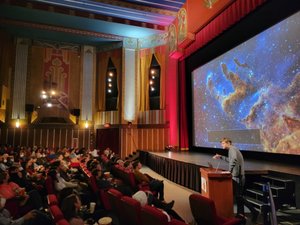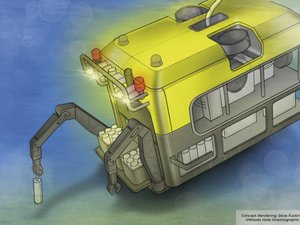American Apparel started in a dorm room at Tufts University in 1989. Over this past weekend the company, once known for its near billion-dollar valuation and hot ads for clothes made in U.S. factories, entered the final stage of its break-up and absorption by Gildan, a company known for making the commemorative t-shirt at your high school reunion last year.
Gildan is buying the brand and the designs, but American Apparel's stores and factories will close.
Even with American Apparel, it was nearly impossible to find clothes made in the U.S.
The decision cost 2,400 people their jobs and it was a blow to those who hope to bring manufacturing jobs back to the U.S. If you're keeping score, this takes some of the shine off GM's move to add or keep 7,000 jobs here. If you're one who already tries to shop American-made, you know it doesn't really make a difference: Even with American Apparel, it was nearly impossible to find clothes made in the U.S., unless shopping at the very high end.
Why this should be, I’m not sure. The world has been aware since at least 2012 of the terrible price of a cheap shirt. And Americans do make clothes, after all. Just ask Peter Moubayed of New England Fleece in Fall River, Mass., who’s making the blankets for Donald Trump’s inauguration. (He made them for both of Obama’s inaugurations, too.) Or ask Robert Kidder of New England Shirt Co., who makes high-end shirts in Fall River and appeared in a campaign ad for Hillary Clinton. The textile industry in “Spindle City” employs about 4,000--a shadow of its former workforce, but a shadow that falls over a story of growth, or two.
Domestically, the clothing manufacturing industry employed about 130,500 people in December. At its peak, four decades ago, it employed 1.4 million.
It’s not just the cost of employing an American worker, says Mark Bollman, founder of Ball & Buck, a high-end, made-in-USA boutique based in Boston where shirts start at $128 each.
“Sewing and operating all these very different machines is a very skilled craft,” he said. “Liken it to a professional local butcher versus a machine factory farming operation.” That means making good clothes isn’t a minimum wage job (though it does pay less than the national average, according to the Bureau of Labor Statistics). It’s also not exactly the profession on every bright high school graduate’s mind, either.
“It’s not like everyone in the millennial generation, generation Y and further, are saying, ‘I’m going to go to trade school like they did in the 50s 60s and 70s,'" Bollman told me. You could invest in machines to do the work, he said, but then you’ve got millions in capital to get a return on—and that’s difficult to get at $60 a pair of pants, apparently.
Still, when you take a look at the price tags inside any of the clothing retailers that have upended American Apparel—Primark, Uniqlo, H&M—it's not hard to imagine that a made-in-USA pair of pants is possible at a modest markup.
American Apparel could have been those pants at that price point. But it never seemed to have my size–or very many others–in stock online. And its stores never really were the place to go if you were a 30-something dad on a mission for a pair of pants. A sexual assault lawsuit against the founder, followed by an executive revolving door, didn't help the company's fortunes.
So, the story of American Apparel's failure isn't necessarily a Quixotic adventure in American manufacturing. Then again, it seems unlikely anyone better endowed with business sense will pick up the torch. If you ask Bollman, Gildan's decision to shutter the chain's 110 stores and shift manufacturing to its existing operations in Latin America and Asia looks like a sound one.
"To put it in a perspective, the price to make one single shirt in Boston, which is where we make all of our shirting," Bollman told me, "is the same price as it would cost to hire a laborer for months in Asia or overseas."
Editor's note: An earlier version of this article misspelled Mark Bollman's name on second reference. It's Bollman.








